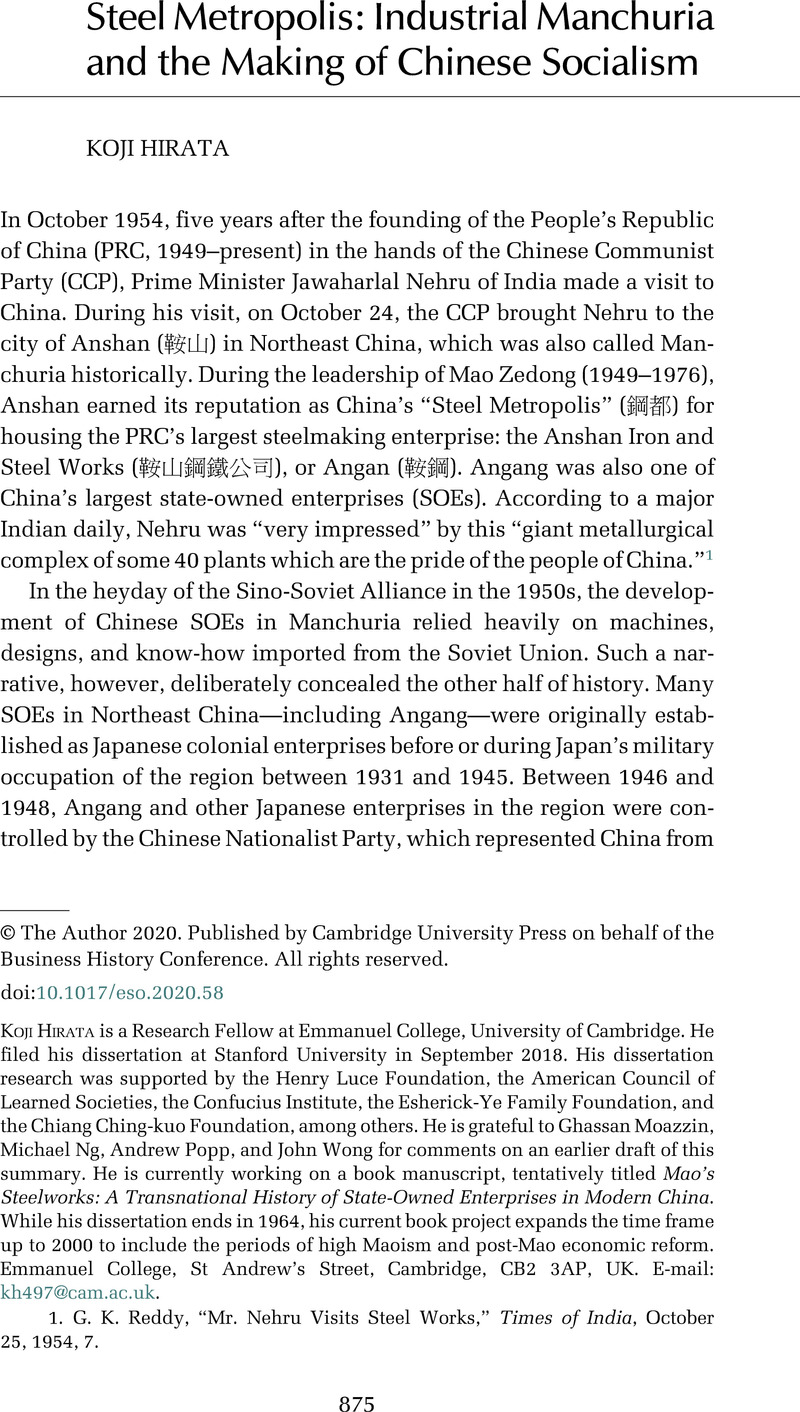Crossref Citations
This article has been cited by the following publications. This list is generated based on data provided by Crossref.
Stapleton, Kristin
2022.
The Modern City in Asia.
Zanier, Valeria
2023.
Counterbalancing low expectations with high hopes: Integrating global technology and pre-1949 legacy in China’s motor vehicle industry in the 1950s.
European Review of History: Revue européenne d'histoire,
Vol. 30,
Issue. 3,
p.
370.
Friedl, Christoffer
and
Lakomaa, Erik
2024.
Monopolist logic? Managing technology in the telecom sector during technological and regulatory change.
Business History,
Vol. 66,
Issue. 5,
p.
1001.



